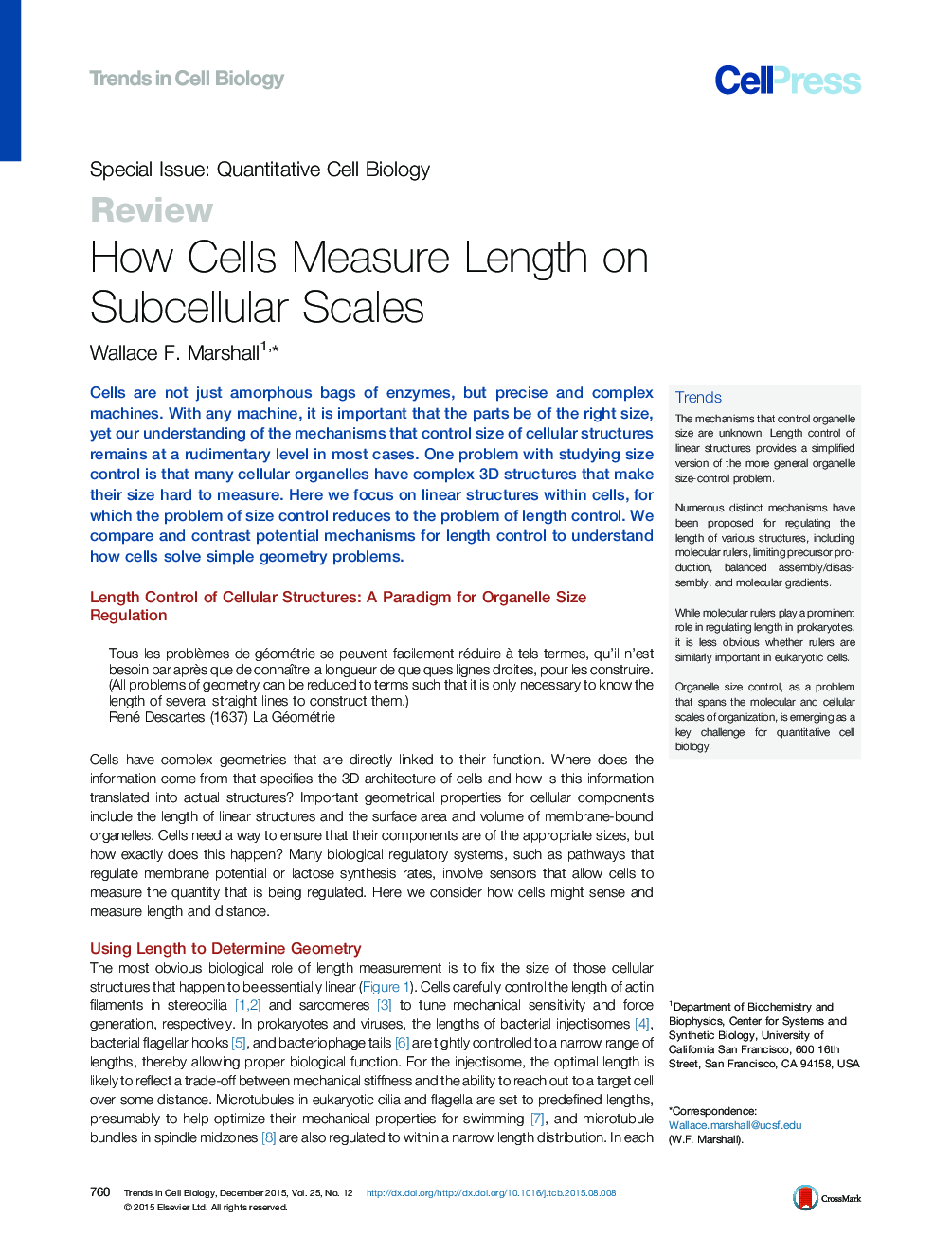| Article ID | Journal | Published Year | Pages | File Type |
|---|---|---|---|---|
| 2204258 | Trends in Cell Biology | 2015 | 9 Pages |
Cells are not just amorphous bags of enzymes, but precise and complex machines. With any machine, it is important that the parts be of the right size, yet our understanding of the mechanisms that control size of cellular structures remains at a rudimentary level in most cases. One problem with studying size control is that many cellular organelles have complex 3D structures that make their size hard to measure. Here we focus on linear structures within cells, for which the problem of size control reduces to the problem of length control. We compare and contrast potential mechanisms for length control to understand how cells solve simple geometry problems.
TrendsThe mechanisms that control organelle size are unknown. Length control of linear structures provides a simplified version of the more general organelle size-control problem.Numerous distinct mechanisms have been proposed for regulating the length of various structures, including molecular rulers, limiting precursor production, balanced assembly/disassembly, and molecular gradients.While molecular rulers play a prominent role in regulating length in prokaryotes, it is less obvious whether rulers are similarly important in eukaryotic cells.Organelle size control, as a problem that spans the molecular and cellular scales of organization, is emerging as a key challenge for quantitative cell biology.
